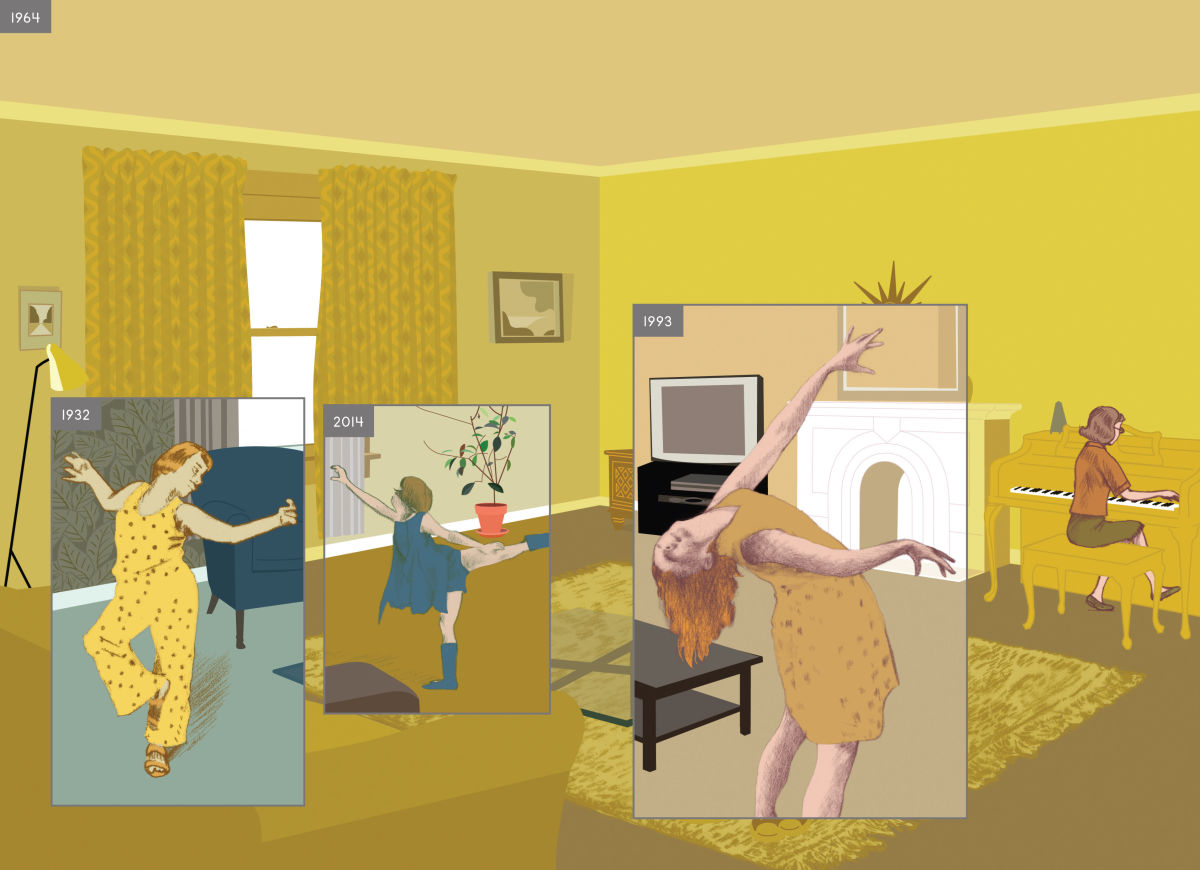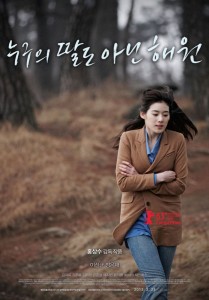By Divya Sachar
The ongoing Prabuddha Dasgupta exhibition at the National Gallery of Modern Art in Delhi has many riches to offer to fans of the late photographer’s work. A career retrospective, the exhibition serves as a cornucopia of both his personal and commercial work. Prabuddha Dasgupta’s work is bold, and suffused with the erotic. At the same time, Time, and its concomitant Death, seem like underlying themes. His abstracts and fashion work insist on the idea of carpe diem – on seizing the moment, while his personal projects based on Ladakh, the community of Goan Catholics, and Hampi, talk about Time in a different way. His final, and perhaps the most personal project, ‘Longing’, brings Eros and Thanatos together in an erotic and, at the same time, elegiac aesthetic.
Most of Dasgupta’s fashion and abstract work is in lush black and white, and steeped with eroticism. A spiral staircase echoes the sinuous backbone of a nude placed a few steps away. The abstracts evoke the beauty, grace and sensuousness of the female form, while the nudes play with abstract ideas, with light and shadows, shapes and textures. Voluptuous close-ups of flowers tantalisingly mimic human genitalia, reminding one of Georgia O’Keeffe’s work. The aesthetic is minimalist, but the mood is baroque. His work for Ganjam jewellery consists of a series of suggestive and arresting high-contrast images, the deep blacks and bright highlights suggesting intensity and sexual passion. The few colour photographs too brim with sensuality, with saturated colours popping out. A model walks on a beach, her pink gown fanned out, like the inside of an oyster shell, or like a piece of silken human flesh. Another picture, suffused with red, has a model lying next to succulent fruit, the light reminding one of Gauguin. The mood is definitely carpe diem, to pluck the day, with no thought of tomorrow.


The mood is quite different in the series on Ladakh. One looks up in awe at the sublime, at the vast spaces, the vertiginous mountains, the looming rocks. There is a sense of serenity, a calm, meditative, even spiritual quality to the photographs. But every once in a while you see echoes of his nudes in the sensual curves of the rivers and dunes. The photograph titled ‘Far east in Changthang’ portrays a sinuous curve of water on scorched earth, opening up both erotic and spiritual possibilities. The strong horizontal lines and vast swathes of dark skies lend strength, stability, and a certain solidity to the images. In Ladakh Time stands still. There is a sense of eternity, of transcendence, of the Immensity that lies beyond human existence.

Hampi, on the other hand, seems to be teeming with ghosts. The photographs of the ruins speak of Death, but also of the lives that once were lived there. The temple atop a huge rock still aspires to reach the heavens. The columns still ascend, clamoring for the sky. The whale like gargantuan rocks seem to contain reservoirs of potential energy, unlike the stillness of the rocks in Ladakh. In one photograph, water stagnates in the recesses, but the carved warriors and gods still animate the rocks. The sunlight makes geometric patterns on the ruins – some kind of Life still goes on amid Death. Time has moved on, but the ghosts still haunt the ruins.
The Goa photographs too are about Time and Death. Another personal project, the photographs seek to capture a community fissured between its Portuguese roots and Indian nationality. The pictures serve as a time capsule of a community frozen in time, with their distinct houses, rituals and accoutrements. There pervades a sense of melancholy, and images of decay abound. Withered old hands holding a Christ amulet, crumbling walls, even a child – a little flower girl – looks sad and mournful. There is an attempt to hold on to a disintegrating culture, and the sense of death and lamentation is never far away.
Prabuddha Dasgupta’s last, and perhaps most personal work, ‘Longing’, brings together the photographer’s preoccupation with Eros and Thanatos – love and death. Intimacy in a relationship is present in direct bursts of erotic passion, as well as through suggestion. Remnants of a shared meal, tousled bedsheets, clothes lying in a careless pile – removed hurriedly perhaps before lovemaking – evoke a certain narrative. The pictures abound in greys, unlike the stark, high contrast images of his earlier work. The textures are softer and intimate, not devoid of the erotic passion or drama of the chiaroscuro of the earlier work, but now suffused with a more calm aesthetic, a maturity, a stillness, a quietness that perhaps came with age. The juxtaposition of the images in this series points to a certain narrative logic as well. A ferocious fire devouring a field sits next to a serene photograph of a tent in another field – a quiet image of a protective cocoon. Both are part of this chronicle. Shots of hectic, frenetic activity are punctuated with shots of stillness, and the whole series is suffused with the melancholic. There seems to be sense of nostalgia for the present moment, a feeling that this is all too ephemeral, and will not last, along with a deep urge to hold on to life through the erotic. This eroticism is not the carpe diem celebration of his earlier work but an elegiac holding on to something that won’t last.. Not surprisingly the series ends on the photograph of a corpse like figure. This seems all the more sad, given the photographer’s sudden and untimely death. In fact ‘Longing’ seems almost like a premonition.
After a successful run the exhibition has been extended further. Here’s a rare chance to see a master photographer’s work.
This article was first published on the website takhty.in



